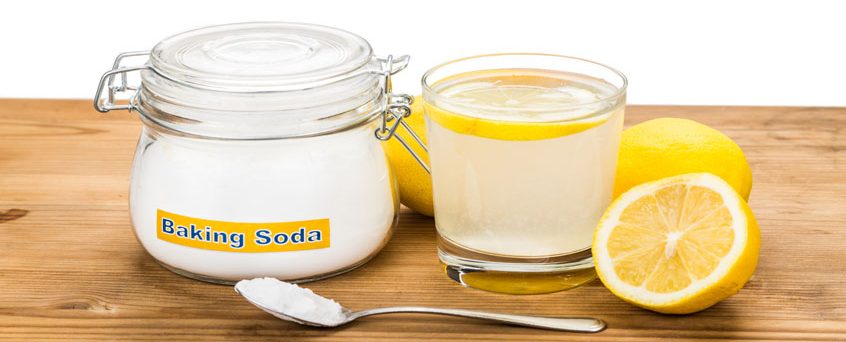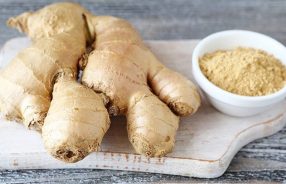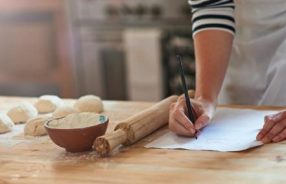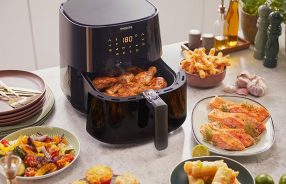Kitchen cleaning with baking soda
Although baking soda can be used anywhere, it has the greatest utility in the kitchen.
Kitchens are gross. A kitchen always needs cleaning. A kitchen always has odors.
That’s probably where the baking soda is stored in your house, so let’s start there.
The kitchen is also another place where toxic and harmful cleaners are often used. For example, have you thought about what makes de-greasers effective? It’s scary – imagine what that would do to your skin. There’s a reason we wear gloves while cleaning the kitchen so often. Throw those out after you read this chapter on baking soda.
Bug Repellent
Kitchens always attract bugs because there are odors and crumbs. Even if you’re clean as can be, bugs will be in your kitchen at some point whether they are ants, beetles, or even cockroaches.
Sprinkling baking soda around areas that are prone to bugs will help keep them away. These will be areas such as under the sink, in corners, in shelves, and around where you have wet food and compost trash.
First, it inhibits the growth of mildew and mold because baking soda is a desiccant – it dries things out. Second, baking soda will absorb any leftover odors. Finally, baking soda will flat out kill bugs when they ingest it because it will create carbon dioxide in the insect and expanding their stomachs, causing them to burst.
And of course, the best part is that you can openly leave baking soda in those areas where people will be because it is safe.
Odor-Killer
Odors are everywhere in your house, not just the kitchen. But the worst ones are often here because of (1) leftover food, (2) the presence of water in sinks, and
(3) the garbage can overflowing with soggy matter. This can lead to bugs, and even worse – mice. If you have a small kitchen with little to not ventilation, it’s going to be tough to want to step in there every day while odors are compounding.
While you can’t de-odorize leftover food very well, you can definitely take care of the odors in your sinks and garbage can. In fact, you should do this quickly so layers of bacteria don’t build up.
All you need to do is sprinkle baking soda over smelly areas, let it absorb the odor overnight, and wipe it away with a wet paper towel. This means you can sprinkle baking soda into the garbage can (inside the trash bag) directly, and pour it down the sink drain directly (wash down with hot water in the sink). Use liberally.
You can squeeze a lemon over the clean surfaces for an extra touch of pleasantness.
If the garbage can itself is developing an odor, you don’t have to take it outside and wash it with a hose. You can also just sprinkle baking soda into the garbage can itself and it will suck up the leftover moisture and odor under the trash bag. Again, use liberally.
Fridge Freshener
This is perhaps the best-known use for baking soda, and unfortunately one of the only ones that people use it for.
If you pop open a box of baking soda in your fridge, it will keep your fridge odorless. This makes it a pleasant experience for you, and it prevents strong food odors from seeping into other foods and ruining their taste.
For example, if you have something with a strong onion or garlic odor, you can prevent your entire fridge from smelling that way, and other foods from having an onion or garlic residue or taste.
Shiny Surfaces
Even if you clean well, sometimes you can’t avoid fingerprints on your shiny surfaces like chrome, steel, countertops, and even marble. It feels like they are unavoidable – if you clean one fingerprint, you’ll leave another elsewhere.
Baking soda is a great polishing agent — and much milder and gentler than commercial polishing agents. Recall that baking soda is a mild abrasive. This means it has the power you need.
If you polish all of these surfaces with a baking soda and water solution (1 tablespoon with 8 ounces), it will wipe away all of your fingerprints and make them shine like you never thought possible. You can also just lightly sprinkle baking soda on top of the surfaces you want to polish and wipe them down with warm paper towels.
De-odorizing Bottles and Flasks
I bought my husband a flask that he’s used all of once because he said it just didn’t feel clean after he used it once. And he’s right – there’s no good way to clean flasks and bottles that you can’t fit a sponge or brush into.
Baking soda presents a simple solution to this.
To clean your bottles, flasks, and other utensils or containers that hold strong odors, soak them in a baking soda solution (1 tablespoon with 8 ounces of water) for an hour at a time. Rinse and repeat if necessary. Now my husband uses his flask all the time – often when it’s embarrassing!
De-odorizing Hands
If you have ever cooked with garlic or onions before, you know that it is difficult to get rid of odors on your hands. It doesn’t matter how many times you’ve washed them – sometimes the odors are still there the next day.
If you cook any ethnic food at all, you’ll know that this problem extends far beyond garlic and onions. How do you deal with smelly hands after you’re done cooking?
You can make a simple hand scrub solution with water and baking soda (1 tablespoon with 8 ounces of water, or just sprinkle baking soda on your hands and scrub together under warm water).
An added benefit to this baking soda solution is you can quickly eliminate the odors on your hands without drying your hands out from washing them ten times.
De-odorizing Sponges
We all wash our dishes with sponges, but we don’t replace the sponges every day because that would be highly impractical and expensive.
However, when we keep a sponge for over a week, they start to develop an odor. And when you wash dishes, often the odor of the sponge stays on your hand instead of the soap smell.
So to eliminate this odor on the sponge, just drop your sponge into a solution of 2 tablespoons of baking soda and 16 ounces of water and let it soak for about 30 minutes. After this, you won’t have to worry about a stinky sponge – for a few days anyway.
You might want to take care to sanitize your sponges daily and not just treat the odor that they cause, however.
Cleaning the Microwave and Oven
There are specific cleaners for both of these appliances, and they happen to be extremely harsh because of the gunk that builds up in them. This is something we want to avoid, because our food is potentially touching them. We are potentially ingesting all of those harsh chemicals I mentioned earlier when you use commercial cleaners. What if you missed a spot and some of it drips into your food directly?
Cleaning gunk in a microwave or oven is difficult because the gunk often builds up so heavily that you need to scrub vigorously before making any progress in cleaning.
Baking soda to the rescue. Here’s a scrub-free method to safely clean your microwave or oven buildup.
Spread a baking soda paste of ½ cup of baking soda with ¼ cup of water, and leave it on the gunk overnight. Then in the morning, spray the baking soda with vinegar, let it bubble a bit, and wipe it all off with a damp paper towel. You can rinse and repeat if necessary with particularly tough buildups.
A side note on baking soda’s reactivity with vinegar: when you combine these two substances, you create a chemical reaction because baking soda is basic and vinegar and acidic.
You might think this causes the substances to neutralize each other – this is true, but in the first few minutes following combining the two, the chemical reaction creates carbonic acid. Carbonic acid is a great cleaning agent, but is unfortunately very unstable and quickly degrades into carbon dioxide (among other things), which explains the bubbles that you’ll always see. This means to effectively use baking soda and vinegar in cleaning, you cannot combine them in advance.
Mop Cleaner
We use mops to clean our kitchen floors and eliminate all the splashes and drops of food waste that have fallen over weeks and months. But have you ever thought about washing the mop to make sure that you’re not just spreading the filth all over the floor again?
Baking soda can help you wash your mop. Just pour ½ cup of baking soda into a bucket and soak the mop for at least 1 hour. This will be gentle on the mop, yet clean and de-odorize it.
Notably, baking soda isn’t strong enough to kill the worst germs and bacteria out there, but it will eliminate the vast majority of them. To make your mop 100% clean, put a few drops of bleach into the bucket along with the baking soda.
But you must never mix bleach and vinegar, because that creates chlorine gas, which can be fatal.
Better Dish Soap
Sometimes our dish soap just isn’t enough to cut through the grease and oil that we’ve used in cooking.
Health aside, we can increase the effectiveness of our dish soap if we simply sprinkle baking soda onto our sponge while we are washing dishes. It is great for cutting through grease, and makes your dish soap a bit more abrasive for better scrubbing.






